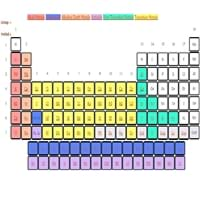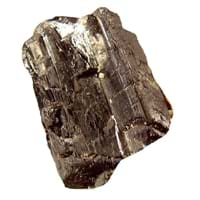Promethium vs Tungsten
Periodic Table
Symbol
Pm
W
Group Number
Not Available
6
12
Period Number
6
6
Block
f block
d block
Element Family
Lanthanide
Transition Metal
CAS Number
7440122
99+
7440337
99+
Space Group Name
Not Available
Im_ 3m
Space Group Number
Not Available
229.00
1
Facts
Interesting Facts
- Promethium metal found in Pitchblende.
- Promethium metal is highly radioactive metal.
- Tungsten element has the second highest melting point.
- Pure tungsten can easily cut down with the help of hacksaw.
Sources
Found in Minerals, Mining
Earth's crust, Found in Minerals, Mining, Ores of Minerals
History
Who Discovered
Chien Shiung Wu, Emilio Segrè, Hans Bethe
Not Available
Discovery
In 1942
In 1781
Abundance
Abundance In Universe
Not Available
5 * 10-8 %
27
Abundance In Sun
~-9999 %
~0.0000004 %
23
Abundance In Meteorites
Not Available
0.00 %
39
Abundance In Earth's Crust
Not Available
0.00 %
39
Abundance In Oceans
Not Available
0.00 %
18
Uses
Uses & Benefits
- It is used for research purpose. Very small amount of this metal is used in atomic batteries.
- Its radioactive decay is used for a phosphor to give off light. The light emitted is converted into electricity.
- Tungsten and its alloys are used in high-temperature applications like welding electrodes, high-temperature furnace, etc.
- Tungsten carbide is very hard and used in metal working, mining and petroleum industry.
Industrial Uses
NA
Aerospace Industry, Automobile Industry, Electrical Industry, Electronic Industry
Medical Uses
NA
NA
Other Uses
NA
Alloys
Biological Properties
Toxicity
Non Toxic
Non Toxic
Present in Human Body
No
Yes
In Blood
0.00 Blood/mg dm-3
37
0.00 Blood/mg dm-3
31
In Bone
Not Available
0.00 p.p.m.
35
Physical Properties
Melting Point
1,042.00 °C
99+
3,410.00 °C
1
Boiling Point
3,000.00 °C
31
5,660.00 °C
1
Appearance
Physical State
Solid
Solid
Color
Unknown
Grayish White
Luster
Metallic
Lustrous
Hardness
Mohs Hardness
Not Available
7.50
2
Brinell Hardness
Not Available
2,000.00 MPa
4
Vickers Hardness
Not Available
3,430.00 MPa
1
Speed of Sound
Not Available
4,620.00 m/s
16
Optical Properties
Reflectivity
Not Available
62.00 %
13
Allotropes
No
No
α Allotropes
Not Available
Not Available
β Allotropes
Not Available
Not Available
γ Allotropes
Not Available
Not Available
Chemical Properties
Chemical Formula
Pm
W
Isotopes
Known Isotopes
27
12
33
6
Electronegativity
Pauling Electronegativity
Not Available
2.36
2
Sanderson Electronegativity
Not Available
0.98
23
Allred Rochow Electronegativity
1.07
32
1.40
19
Allen Electronegativity
Not Available
1.47
29
Electropositivity
Pauling Electropositivity
Not Available
1.64
99+
Ionization Energies
1st Energy Level
540.00 kJ/mol
99+
770.00 kJ/mol
16
2nd Energy Level
1,050.00 kJ/mol
99+
1,700.00 kJ/mol
29
3rd Energy Level
2,150.00 kJ/mol
99+
Not Available
4th Energy Level
3,970.00 kJ/mol
38
Not Available
Electrochemical Equivalent
1.80 g/amp-hr
36
1.14 g/amp-hr
99+
Electron Work Function
Not Available
4.55 eV
13
Other Chemical Properties
Ionization, Radioactive Isotopes, Solubility
Ionization, Radioactive Isotopes, Solubility
Atomic Properties
Atomic Number
61
99+
74
99+
Electron Configuration
[Xe] 4f5 6s2
[Xe] 4f14 5d4 6s2
Crystal Structure
Double Hexagonal Close Packed (DHCP)
Body Centered Cubic (BCC)
Crystal Lattice
DHCP-Crystal-Structure-of-Promethium.jpg#100
BCC-Crystal-Structure-.jpg#100
Atom
Number of Protons
61
99+
74
99+
Number of Neutrons
84
40
110
27
Number of Electrons
61
99+
74
99+
Radius of an Atom
Atomic Radius
183.00 pm
10
139.00 pm
39
Covalent Radius
199.00 pm
12
162.00 pm
29
Van der Waals Radius
236.00 pm
16
200.00 pm
28
Atomic Weight
145.00 amu
99+
183.84 amu
37
Atomic Volume
22.39 cm3/mol
12
9.53 cm3/mol
99+
Adjacent Atomic Numbers
Valence Electron Potential
44.10 (-eV)
39
140.00 (-eV)
5
Lattice Constant
Not Available
316.52 pm
99+
Lattice Angles
Unknown
π/2, π/2, π/2
Lattice C/A Ratio
Not Available
Not Available
Mechanical Properties
Density
Density At Room Temperature
7.26 g/cm3
99+
19.25 g/cm3
16
Density When Liquid (at m.p.)
Not Available
17.60 g/cm3
5
Tensile Strength
Not Available
370.00 MPa
10
Viscosity
Not Available
Not Available
Vapor Pressure
Vapor Pressure at 2000 K
Not Available
0.00 (Pa)
32
Elasticity properties
Shear Modulus
18.00 GPa
36
161.00 GPa
5
Bulk Modulus
33.00 GPa
36
310.00 GPa
4
Young's Modulus
46.00 GPa
38
411.00 GPa
4
Poisson Ratio
0.28
17
0.28
17
Other Mechanical Properties
NA
Ductile, Malleable
Magnetic Properties
Magnetic Characteristics
Specific Gravity
7.26
99+
19.22
9
Magnetic Ordering
Paramagnetic
Paramagnetic
Electrical Properties
Electrical Property
Conductor
Superconductor
Resistivity
0.75 nΩ·m
99+
52.80 nΩ·m
99+
Electrical Conductivity
Not Available
0.19 106/cm Ω
10
Electron Affinity
50.00 kJ/mol
21
78.60 kJ/mol
13
Thermal Properties
Specific Heat
0.18 J/(kg K)
33
0.13 J/(kg K)
39
Molar Heat Capacity
Not Available
24.27 J/mol·K
99+
Thermal Conductivity
17.90 W/m·K
99+
173.00 W/m·K
7
Critical Temperature
Not Available
Not Available
Thermal Expansion
9.00 µm/(m·K)
99+
4.50 µm/(m·K)
99+
Enthalpy
Enthalpy of Vaporization
Not Available
799.10 kJ/mol
1
Enthalpy of Fusion
7.50 kJ/mol
99+
35.23 kJ/mol
1
Enthalpy of Atomization
310.00 kJ/mol
34
837.00 kJ/mol
1
Standard Molar Entropy
Not Available
32.60 J/mol.K
99+
|
||
|
||
|












